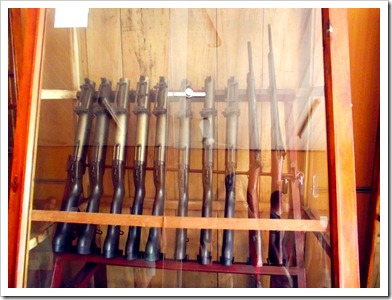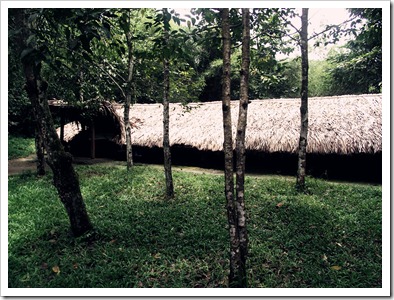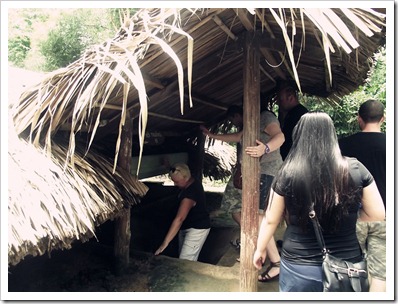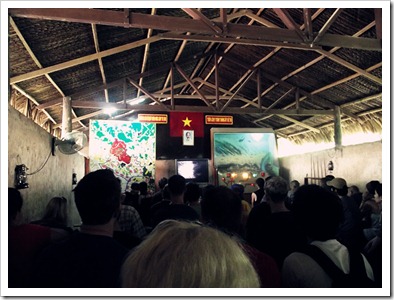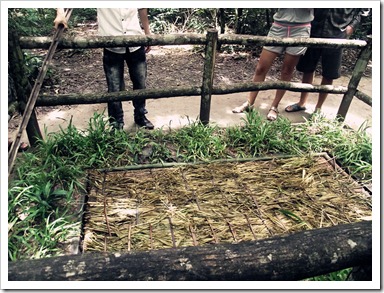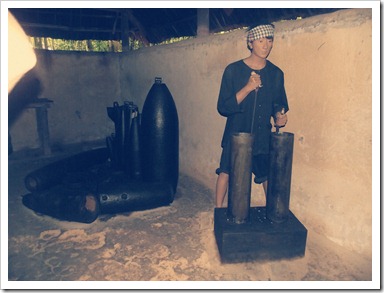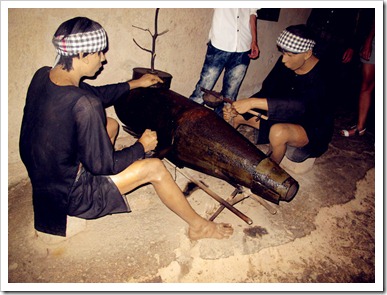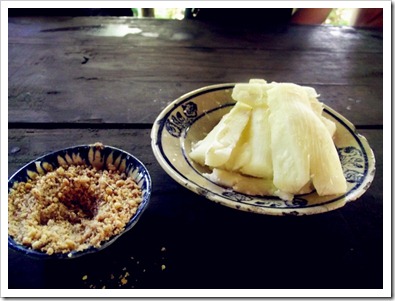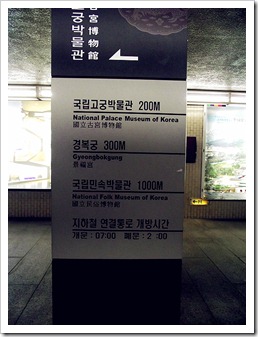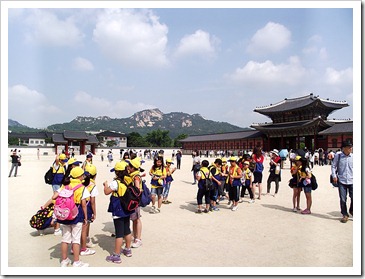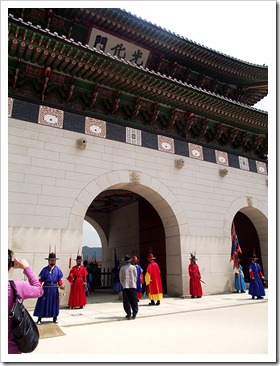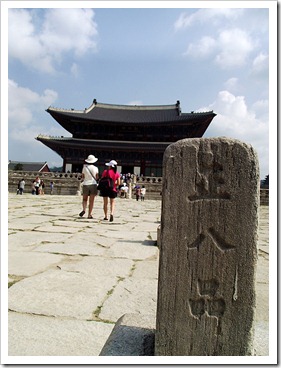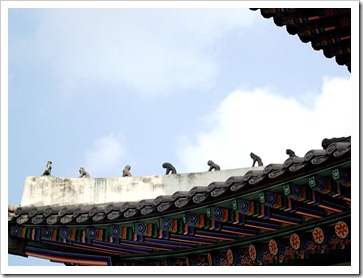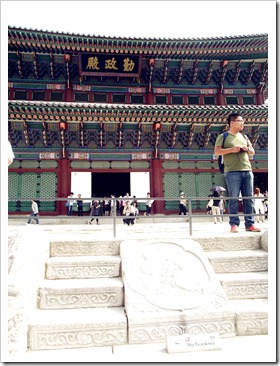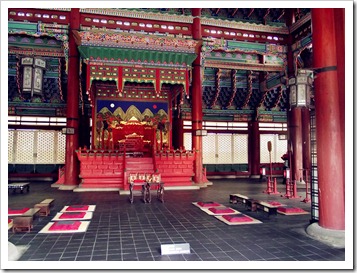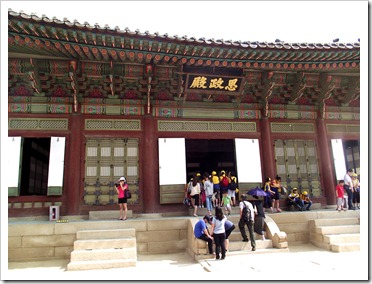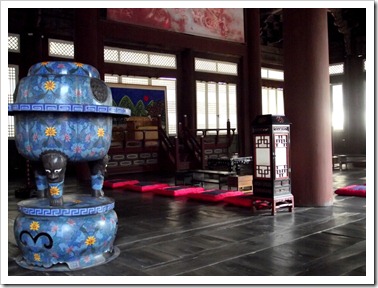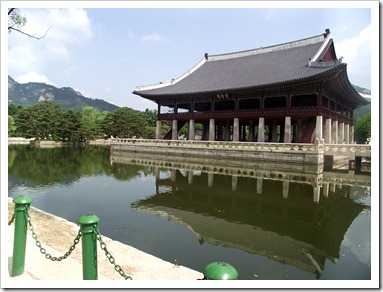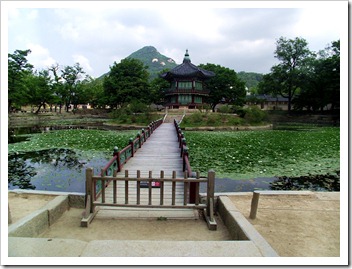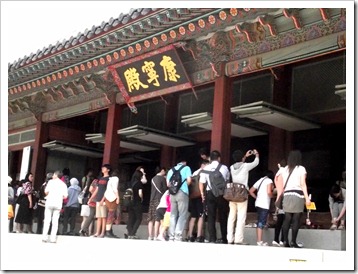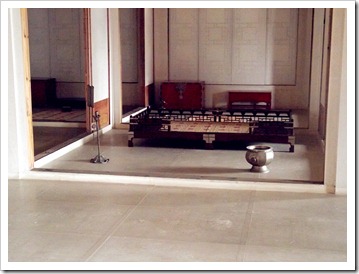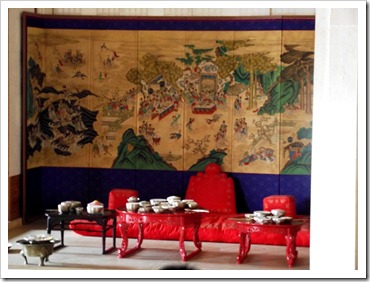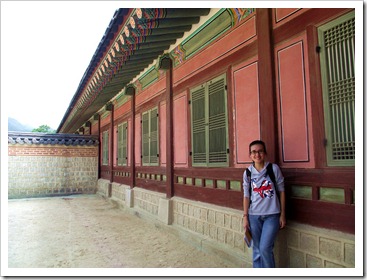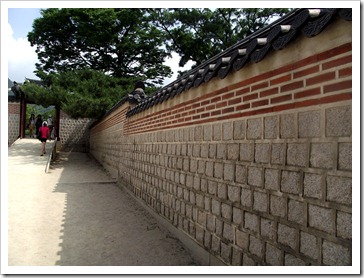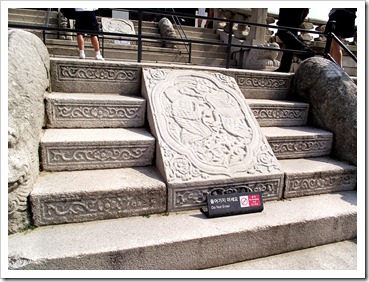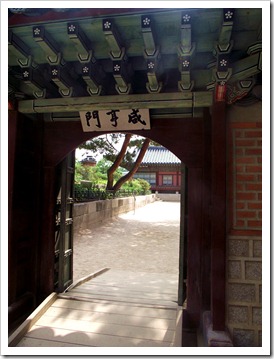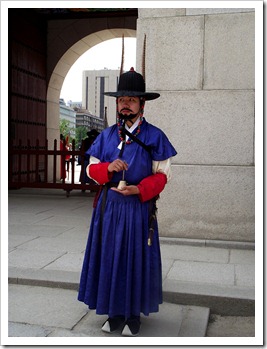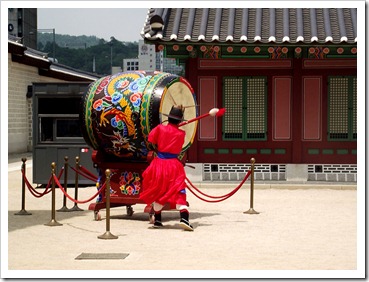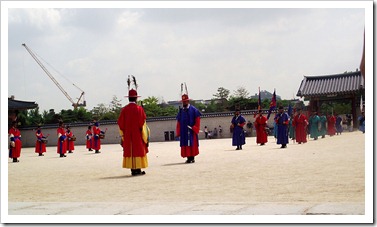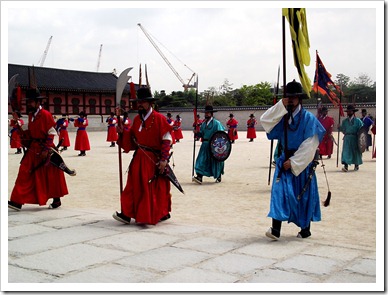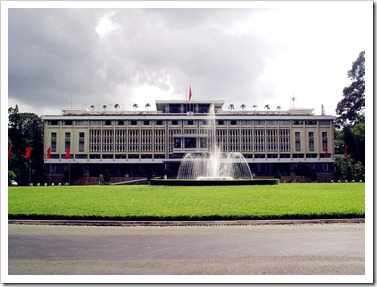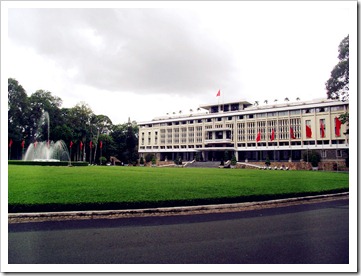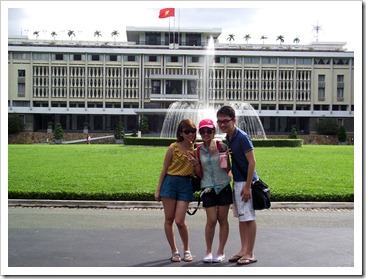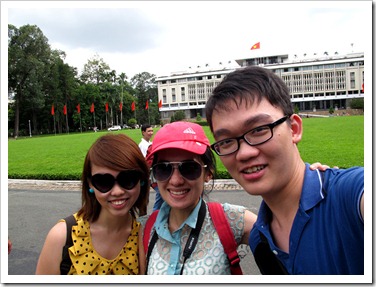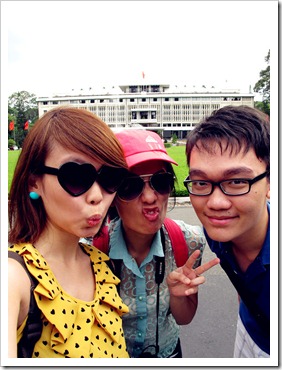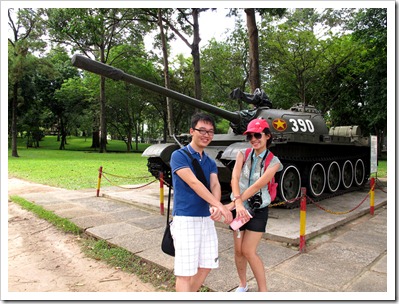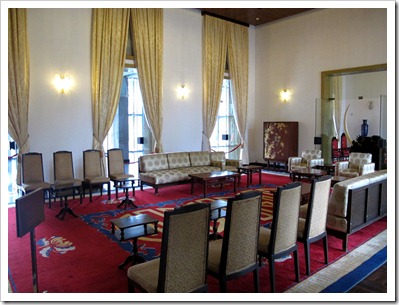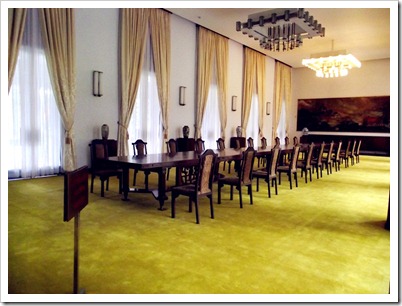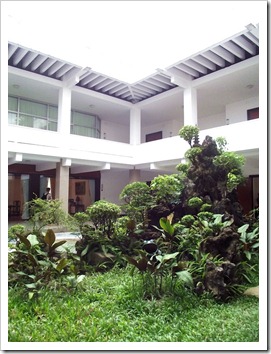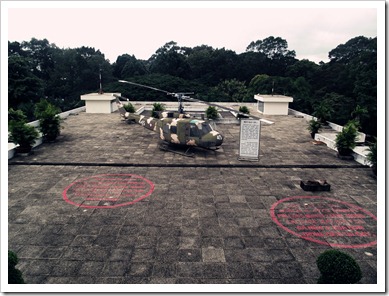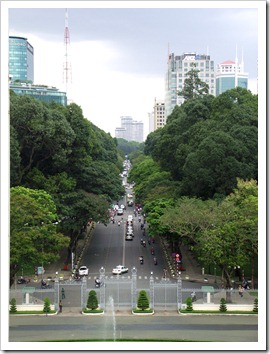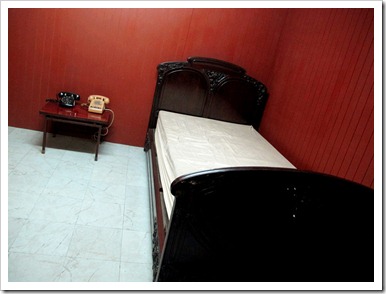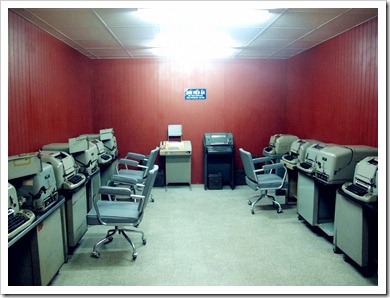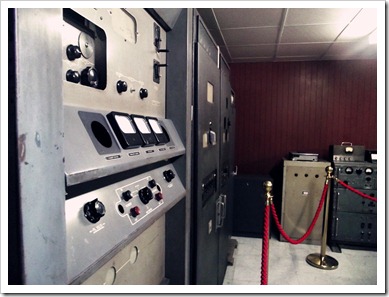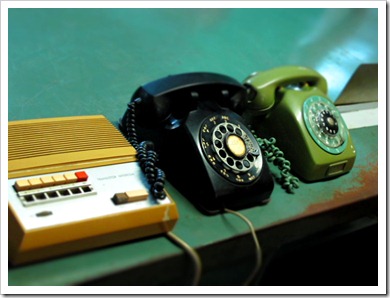You can get the Cu-Chi Tunnel trip package easily at the Pham Ngu Lao area. You can choose from half day trip or full day trip. We picked the half day trip package by a travel agent at 203, De Tham Street at USD5 per person. The trip package is inclusive of transport to the tunnel and the tour guide service. If you picked the full day trip, you will be bring to another attraction site which is the Cao Dai Temple. The journey from HCM city to the tunnel area took about 1 hour and before that we brought to visit a handcraft factory.
As usual, I going to tell you all a little history about the Cu-Chi Tunnel.
Cu Chi Tunnels are an elaborate underground community made up of 250 km of tunnels and chambers below the city. The tunnels were dug with simple tools and bare hands during the French occupation in the 1940s, and further expanded during the Vietnam War in the 1960s to provide refuge and a defensive advantage over the American soldiers. Despite all the bombings in their town, the Cu Chi people were able to continue their lives beneath the soil, where they slept, ate, planned attacks, healed their sick, and taught their young. Some even wed and gave birth underground, but over 10,000 lost their lives here.
Stop dozing off. Lecture ends
.
Lets the pictures tell the story:
After the weapon exhibition area,
we came to this tunnel walkway that
going to bring us to the tunnel area.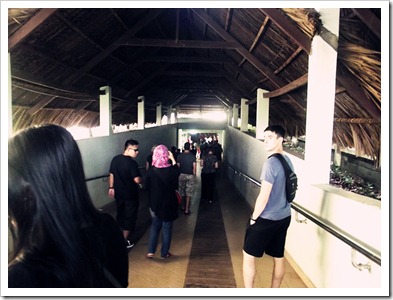
we came to this tunnel walkway that
going to bring us to the tunnel area.

After the video show, the tour guide bring us to here.
A trap door on the jungle floor leads down into the Củ Chi tunnels.
The trap door is cover by the leaves.
Not easily detectable.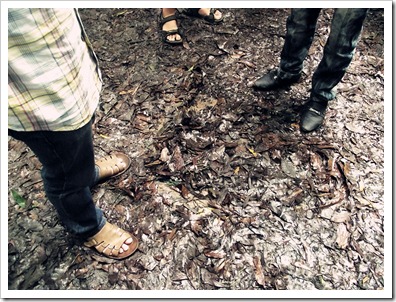 The angmo and my cousin is going down through the mini trap door.
The angmo and my cousin is going down through the mini trap door.
*Can see how small the door is?*
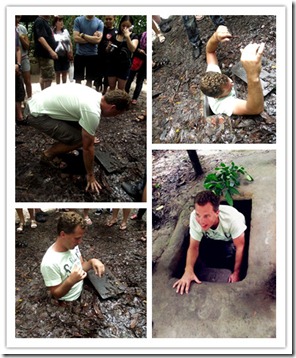
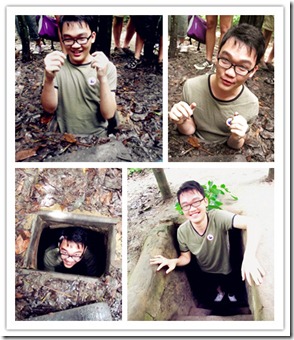
A trap door on the jungle floor leads down into the Củ Chi tunnels.
The trap door is cover by the leaves.
Not easily detectable.
 The angmo and my cousin is going down through the mini trap door.
The angmo and my cousin is going down through the mini trap door.*Can see how small the door is?*


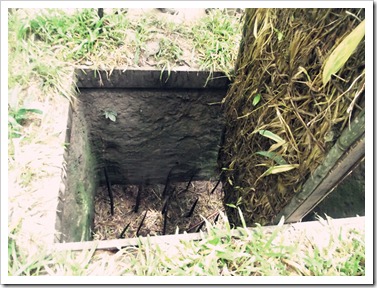
A booby trap with bamboo spikes.
*Mouth open*
*Mouth open*
There is a small hut set up as Self Made Weapons Gallery.
Well, I don’t think the weapons are weapons.
Because,they are TRAPS!!!
Well, I don’t think the weapons are weapons.
Because,they are TRAPS!!!
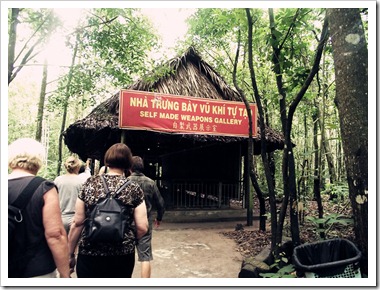
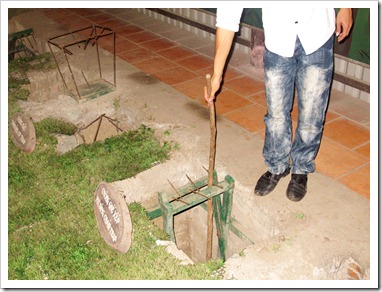
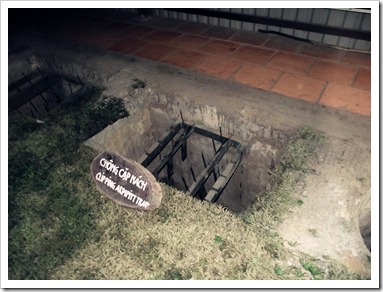
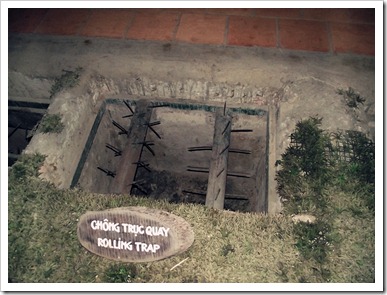
Can MATI teruk teruk if fall into these trap!!
*Kia Si Lang*
We experienced a few metres journey inside the tunnel.
So low punya ceiling.
I am “tall’ enough to knock my head.
Need to walk like a duck in that poor air ventilation tunnel,huhu!
*Quek quek*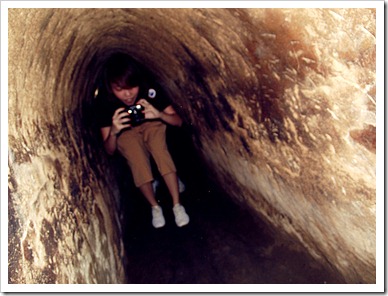
So low punya ceiling.
I am “tall’ enough to knock my head.
Need to walk like a duck in that poor air ventilation tunnel,huhu!
*Quek quek*

There is a shooting range where visitors can fire assault rifles,
such as the M16 or AK47 and light machine gun.
such as the M16 or AK47 and light machine gun.
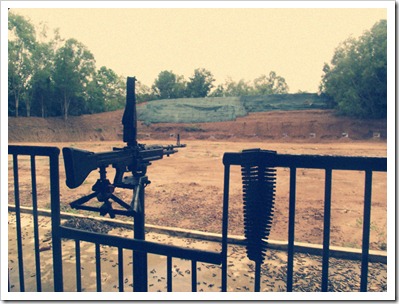
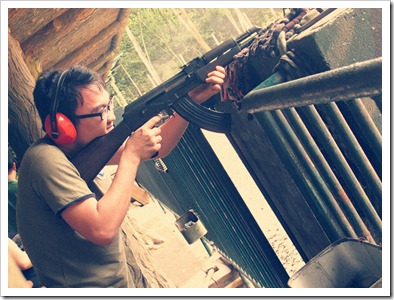

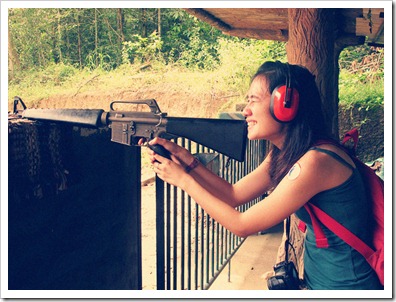
Yours truly is playing with gun in her style.
Overall, this is a wonderful tunnel trip and now,
I can tell people loudly that
I WENT TO HO CHI MINH!!
I can tell people loudly that
I WENT TO HO CHI MINH!!

